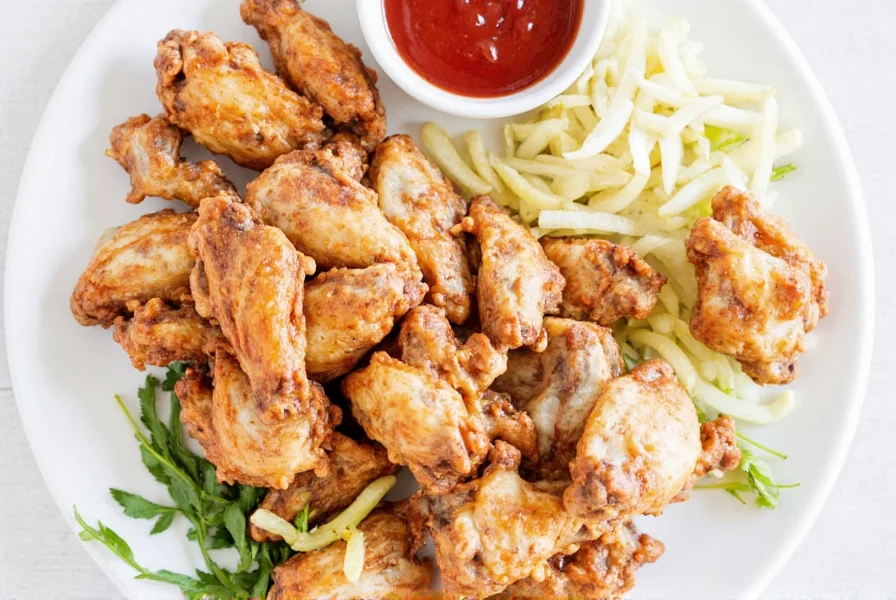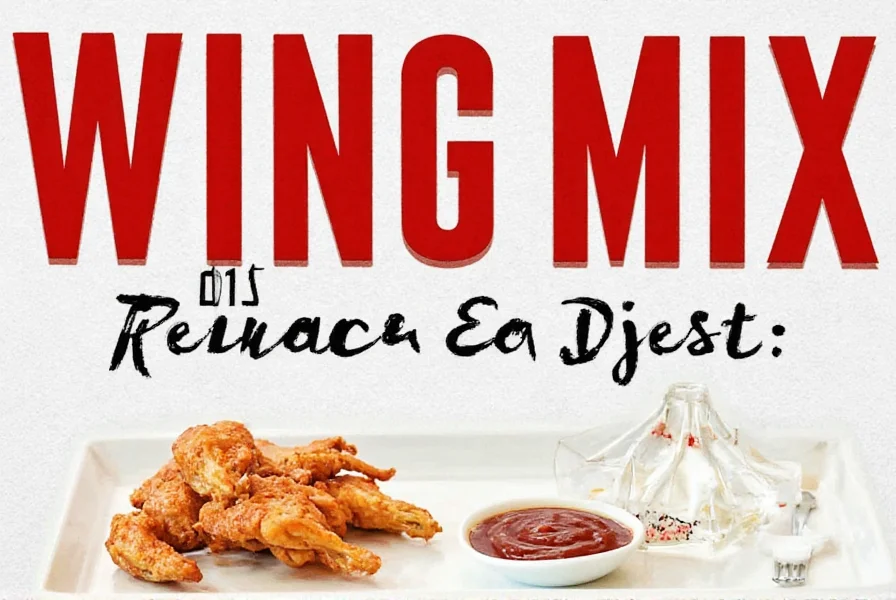Creating the perfect chicken wings starts with understanding what makes an exceptional wing mix. Whether you're preparing classic buffalo style, dry-rubbed wings, or experimenting with global flavors, the right seasoning combination transforms ordinary poultry into extraordinary finger food. Professional chefs and home cooks alike rely on well-crafted wing mixes to deliver consistent, restaurant-quality results.
Understanding Wing Mix Components
Effective wing mixes balance four fundamental elements: heat, acidity, saltiness, and umami. The best formulations consider how these components interact with chicken skin's natural fats during cooking. Unlike generic seasoning blends, wing mixes account for the high-heat cooking process that concentrates flavors and the need for adhesion to moist wing surfaces.
Dry Rub vs. Wet Sauce Wing Mixes
Dry rub wing mixes create crispy exteriors through spice-skin interaction, while wet sauce mixes provide that signature sticky coating. Many professional kitchens use a combination approach—applying dry seasoning before cooking and finishing with a light sauce application. This dual-method prevents sauce burning while maximizing flavor penetration.
| Mix Type | Best For | Shelf Life | Application Tip |
|---|---|---|---|
| Dry Rub | Baked or grilled wings | 6-12 months | Apply 30 minutes before cooking |
| Vinegar-Based | Traditional buffalo style | 2 weeks refrigerated | Toss immediately after cooking |
| Cream-Based | Milder flavors, blue cheese | 5 days refrigerated | Use as dipping sauce |
Essential Ingredients for Homemade Wing Mix
Creating your own wing mix gives you complete control over ingredients and heat levels. The foundation of most successful homemade wing seasoning mix recipes includes:
- Cayenne pepper - Provides consistent heat (adjust amount for spice level)
- Paprika - Adds color and subtle sweetness
- Garlic powder - Delivers savory depth without burning
- Onion powder - Complements garlic with additional umami
- Black pepper - Contributes complex heat notes
- Salt - Critical for flavor enhancement (use kosher for better distribution)

Professional-Grade Wing Mix Recipe
This restaurant-style wing seasoning blend works for both dry rub applications and as the base for wet sauces. The ratio of ingredients creates balanced flavor that won't overpower the chicken.
Dry Rub Version: Combine 1/4 cup paprika, 2 tablespoons cayenne, 2 tablespoons garlic powder, 2 tablespoons onion powder, 1 tablespoon black pepper, and 3 tablespoons kosher salt. Apply generously to wings 30 minutes before cooking.
Sauce Version: Whisk 1 cup melted butter with 1/2 cup hot sauce, 2 tablespoons of the dry rub mix, and 1 tablespoon Worcestershire sauce. Toss with freshly cooked wings until evenly coated.
Achieving Perfect Wing Mix Consistency
The texture of your wing mix significantly impacts results. For dry rubs, ensure all ingredients are finely ground to prevent uneven seasoning. When making wet sauces, the ideal viscosity clings to wings without dripping excessively. If your homemade wing mix separates, add 1 teaspoon of cornstarch slurry (1:1 cornstarch to cold water) while heating to stabilize emulsion.
Temperature matters—always apply wet sauces to hot wings immediately after cooking. The residual heat helps the sauce adhere properly. For extra-crispy results, some chefs recommend a second coating of sauce after wings have rested for five minutes.

Storage and Shelf Life Considerations
Dry wing mixes maintain freshness longest when stored in airtight containers away from light and moisture. Properly stored, homemade dry rub wing mix recipes can remain potent for 6-12 months. Wet sauce formulations have shorter shelf lives—typically 1-2 weeks refrigerated. Always label your containers with preparation dates to track freshness.
Freezing works well for batch-prepared wet wing mixes. Portion into ice cube trays, then transfer frozen cubes to freezer bags. This wing mix storage method preserves flavor while allowing you to thaw only what you need.
Common Wing Mix Mistakes to Avoid
Many home cooks make these critical errors when preparing wing mixes:
- Over-salting (start with less—you can always add more)
- Using fresh garlic instead of powder (burns at high temperatures)
- Applying wet sauce too early (causes soggy skin)
- Not tasting the mix before application
- Using expired spices (significantly reduces flavor impact)
Remember that wing mix ratio for perfect flavor varies based on personal preference and cooking method. Always test small batches before committing to large quantities.
Frequently Asked Questions
What's the difference between wing mix and wing sauce?
Wing mix refers to the complete seasoning formulation, which can be either dry (rub) or wet (sauce). Wing sauce specifically describes the liquid preparation, typically vinegar-based with butter. Dry wing mixes create crispy exteriors through spice-skin interaction, while wet sauces provide the characteristic sticky coating associated with buffalo wings.
Can I make a gluten-free wing mix?
Yes, most homemade wing mix recipes are naturally gluten-free when using pure spices and checking hot sauce ingredients. Many commercial hot sauces contain gluten as a thickener, so verify labels if preparing for gluten-sensitive individuals. The dry rub version of our restaurant-style wing seasoning blend is inherently gluten-free when using certified gluten-free ingredients.
How much wing mix should I use per pound of wings?
For dry rubs, use approximately 2 tablespoons of seasoning per pound of wings. When making wet sauce, combine 1/2 cup sauce mixture per pound of cooked wings. The ideal wing mix ratio for perfect flavor balances coverage without overwhelming the chicken—toss wings gradually until evenly coated but not dripping.
Why does my wing mix separate when I apply it?
Separation occurs when the emulsion breaks, typically from improper temperature control or incorrect ratios. Butter-based sauces separate if added to cold wings or if the butter-to-vinegar ratio exceeds 2:1. To prevent this, ensure wings are hot when applying sauce, maintain proper ingredient ratios, and consider adding 1 teaspoon of cornstarch slurry to stabilize the mixture.
Can I use wing mix for other foods besides chicken wings?
Absolutely. Versatile wing mix recipes work well as seasonings for chicken tenders, roasted vegetables, or even popcorn. The dry rub version makes an excellent general-purpose seasoning for meats. Many chefs use their favorite wing mix as a base for marinades or salad dressings by adjusting the liquid components.










 浙公网安备
33010002000092号
浙公网安备
33010002000092号 浙B2-20120091-4
浙B2-20120091-4